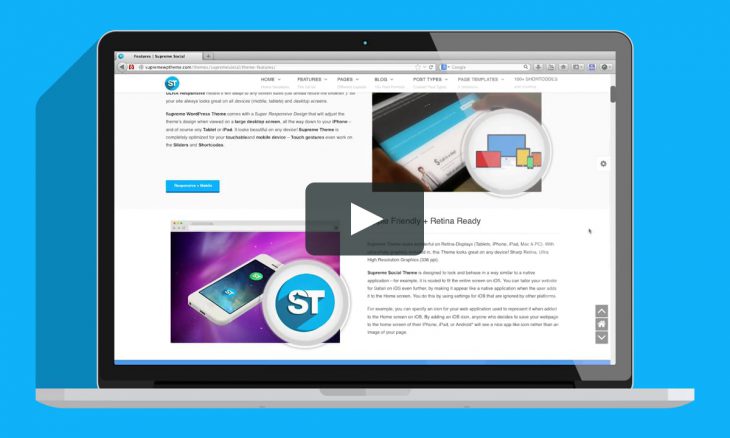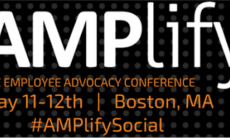Not many small businesses currently take advantage of native advertising, so the small businesses that do gain a significant advantage over the competition. Native advertising is advertising that looks like the rest of the content on a page, even though it’s promoted and paid for. You’ve seen it when you scroll through Facebook, though you might not even realize some of those posts are sponsored. If you own a small business and haven’t looked into native advertising, now is the time to start.
Find your audience’s platform
Where does your audience hang out the most? Are you extremely active on Facebook or Twitter? Demographic clues will clue you in on where your audience is, but you can figure it out by asking yourself where you get the most follows, likes, and shares. If you don’t use social media very often, you should try to increase your activity. Pick one platform and engage with your customer base.
You should spend some time learning the ins and outs of that social media platform. Interact with your clients. Find out what they want to read, what they like about your business, and what they want more of. View what advertisements look like on that platform and learn from them. Highlight the ones that grab your attention, so you can gain inspiration from what those brands are doing. Check out what businesses similar to yours are doing right and what they’re doing wrong. Only when you’ve become familiar with how advertising and interaction work on that specific social media platform can you create effective ads.
Use existing content to create promoted posts
Your evergreen content is a wonderful resource for promoted posts on your most popular social media platform. Promoted posts reach far more users than regular posts. Since you’ve already created the content, a promoted post is a good way to get started without overwhelming yourself. Find a new way to talk about your evergreen content via a promoted post. Highlight a specific topic within the post or talk about why it’s a great read to prepare for a holiday coming up.
Existing content isn’t your only outlet for promoted posts. Your familiarity with your customers and social media should give you ideas on what your customers most want to see. Those new promoted posts will land in front of the people most likely to want to read them, so always take audience cues as a major source of content inspiration.
Be clear you promoted the content
People don’t like to feel tricked, so they won’t be happy with you if they click on a post and don’t realize it’s a piece of native advertising. You don’t have to create a huge banner or proclaim in all caps that your content is sponsored. Just state it plainly, so you give possible customers a choice about whether or not to engage with your brand.
This actually has a more positive effect than you might realize. It’s true that not everyone will click on a paid post, but the people who do click are already more interested in your brand than people who are just browsing and clicking. Those who click a promoted post are possible customers who want to hear what you have to offer.
Build your content slowly
You can’t launch a gigantic native advertising campaign overnight. It took you some time to build good web content for your small business, and it took more time to create a social media presence. Begin with a few key tactics, like those promoted posts, and go from there. Some native advertising attempts will be more successful than others. Try promoting two or three posts, then track how they do and see if there’s a significant difference in success among them.
Add new types of content
Get a little help from content marketing experts to create new kinds of content. Most small businesses don’t have the skill or equipment to create videos or infographics, even though businesses benefit significantly from posting this kind of content. If you can swing it in your budget, hire professionals to make a few how-to videos or infographics on some content you think your audience will love.
Think about how easy it is to stop scrolling through a feed if you see an interesting video. That video could be yours, and it could be in front of your customers. But if you’re going to pay to advertise your content, you want it to provide valuable information and look professional. This isn’t a good DIY project for the inexperienced, especially because the people who create the content for you usually have ways of analyzing how well it’s doing as an advertisement and can give you data you wouldn’t have gathered yourself.
Find local influencers
Are there any bloggers or social media influencers in your area? Another style of native advertising small businesses might want to try is paying them to post some of your content. This type of sponsored content is a little different from typical native advertising, depending on how you proceed. Some bloggers will want to sample your products and write a review. Others will post content you’ve created and include a note that it’s a guest post from someone at your business.
Finding the right local influencers for this kind of post is difficult. Your area might not have anyone with a following that contains enough of your target audience. Master the other native advertising tips first, then go looking for local bloggers you can connect with. This can be an extremely worthwhile way to advertise because everyone loves recommendations from sources they trust, but you have to take the time to do it right.
The way we advertise has completely changed. Content marketing and social media are valuable platforms that offer untapped potential for small businesses especially. Look at what the big corporations are doing with their online advertising. You’ll see a lot of native advertising mixed in with their content marketing. It’s time your small business got started, too.







